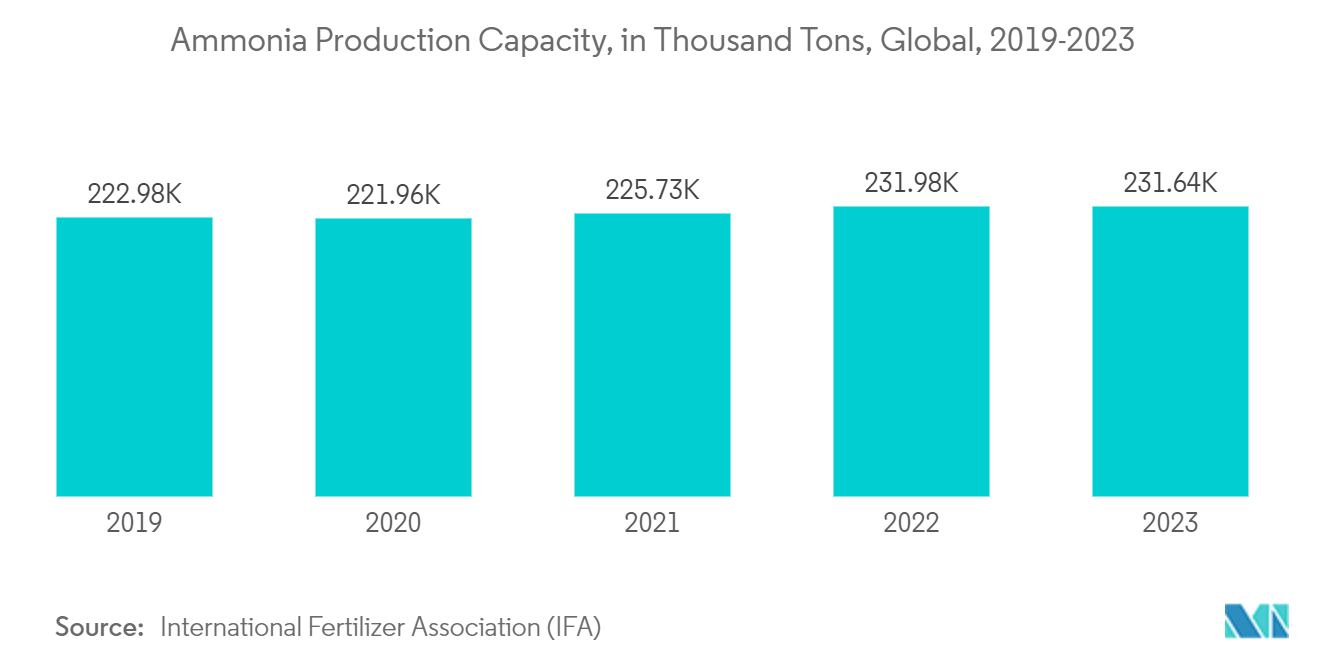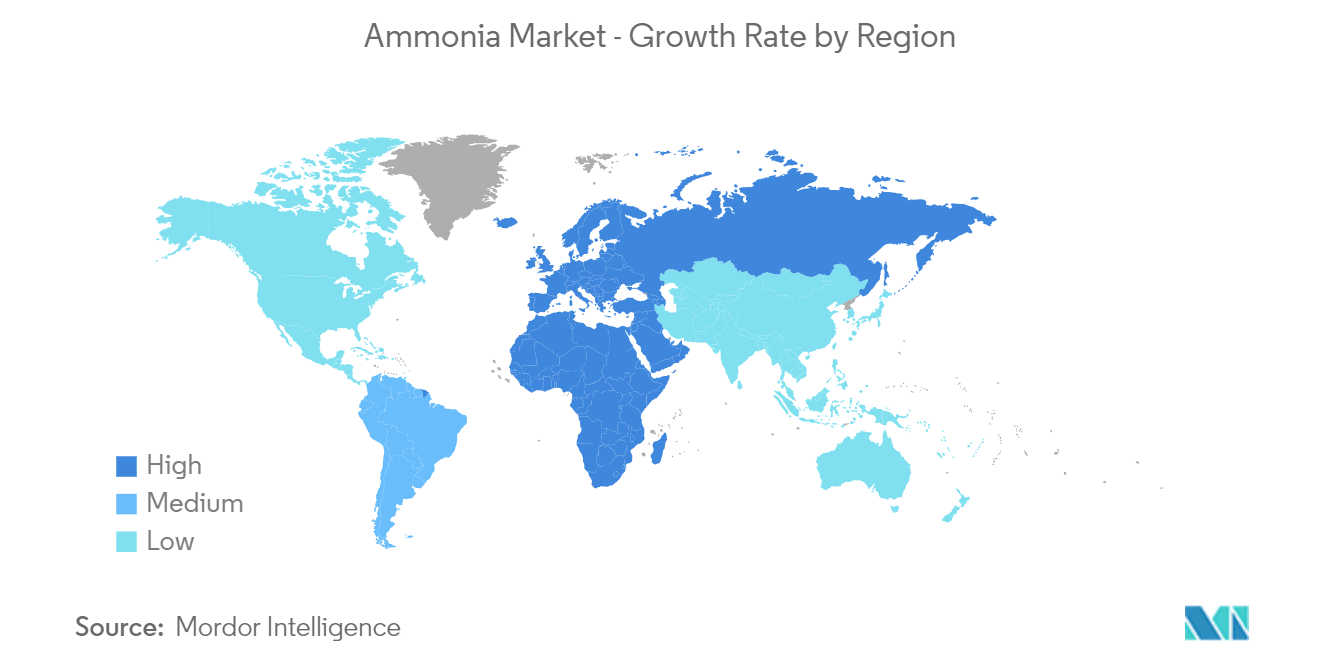Market Trends of Ammonia Industry
The Agriculture Industry is Expected to Dominate the Market
- According to the World Economic Forum, ammonia is vital in agriculture and the global food supply chain. Ammonia has also been recognized as a future energy source for clean hydrogen.
- Ammonia binds nitrogen from the atmosphere and produces the primary crop nutrients using the absorbed nitrogen, which is then used to produce nitrogen fertilizers. As an essential raw material for fertilizer production, ammonia improves crop health and, in the long run, maintains and even increases soil fertility.
- According to the United Nations, the world population continues to grow and will reach 9 billion by 2050. By then, on the same land area, the demand for food production is expected to increase by 60%. Achieving food security requires the availability of sufficient, nutritious food at affordable prices. This can be achieved through the use of optimized fertilizers.
- Additionally, the United States is among the top importers of the three major fertilizer ingredients. Major producers of the main fertilizer components include China, Russia, Canada, and Morocco. In March 2023, the US Department of Agriculture (USDA) announced the first two rounds of a new grant program to expand innovative production for domestic fertilizer production capacity in 47 states and two territories. The USDA further announced that it received USD 3 billion in applications from more than 350 independent companies, thus highlighting significant recovery in the country's fertilizer industry.
- Furthermore, the USDA also announced its first USD 29 million grant offering in the first round. The subsidy will help independent companies increase their production of American-made fertilizers and encourage healthy competition.
- In March 2023, CBH Group announced the opening of its new Kwinana Fertilizer Plant, which will benefit grain farmers in Western Australia significantly. The project marks the start of CBH's liquid fertilizer business, increasing its granular fertilizer production capacity by 15,000. The new facility has 32,000 tons of urea ammonium nitrate (UAN) storage capacity and 55,000 tons of granular bulk fertilizer.
- Therefore, all the aforementioned factors are expected to enhance the demand for ammonia from the agriculture industry between 2024 and 2029.

Asia-Pacific is Expected to Dominate the Market
- Asia-Pacific dominates the ammonia market owing to large consumption from countries such as China, India, and Japan.
- China is the largest producer and consumer of ammonia in the world. According to the US Geological Survey (USGS), the country produced 43 million metric tons of ammonia in 2023. The demand for ammonia in the country is rising due to increasing applications in the agriculture industry, such as fertilizers, textiles, pharmaceuticals, and mining.
- China accounts for approximately 7% of the overall agricultural acreage globally, thus feeding 22% of the world’s population. The country is the largest producer of various crops, including rice, cotton, potatoes, and others. Hence, the demand for ammonia, which is used as a fertilizer, is rapidly increasing owing to the country's large-scale agricultural activities.
- Further, India is one of the economies that are largely dependent on agriculture. Agriculture is still the primary source of livelihood for more than 55% of the population. As per the Department of Fertilizers, in FY2023, about 28 million metric tons of urea were produced in India, which was 25.72 million metric tons in the previous year. Urea production in India presented an increasing trend.
- The textile industry also benefits from ammonia's capabilities. The use of liquid ammonia in tanning is widespread, as is the use of dyes in textile dyeing. Liquid ammonia plays an important role in the development of synthetic fabrics. The solution of ammonia enables fabric coloring to achieve almost any color.
- Japan has a long tradition in textile production and is one of the largest manufacturers of technical textiles. To remain competitive in the global market flooded with cheap textiles from China and other emerging countries, the Japanese textile industry is transforming into an industry that specializes in technological and smart textiles. Innovations such as synthetic spider silk and wearable health monitors are among the efforts to differentiate the Japanese textile industry.
- In addition, according to the Indian Brand Equity Foundation, India's textile and apparel exports (including handicrafts) from April 2023 to October 2023 stood at USD 21.15 billion. The industry is expected to reach USD 190 billion by 2025-26.
- Thus, all the above-mentioned factors are likely to provide the increasing demand for the ammonia market between 2024 and 2029.



